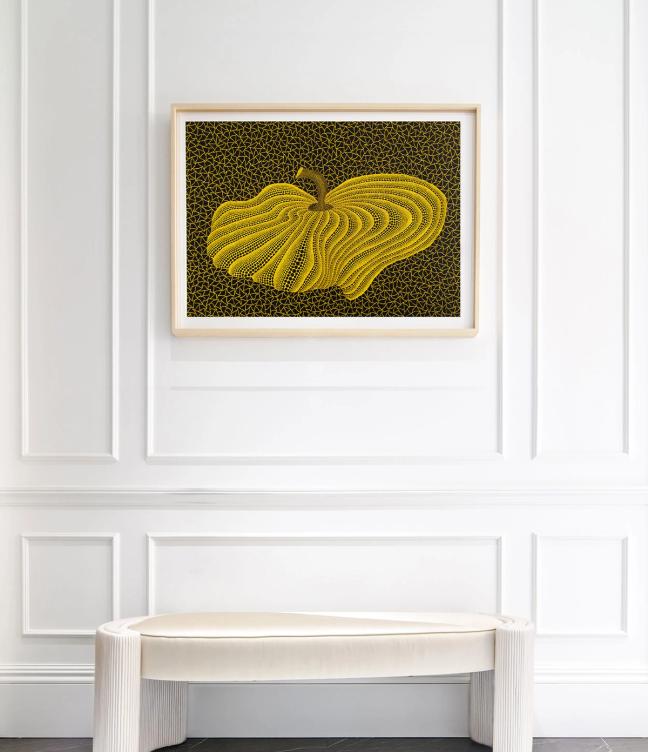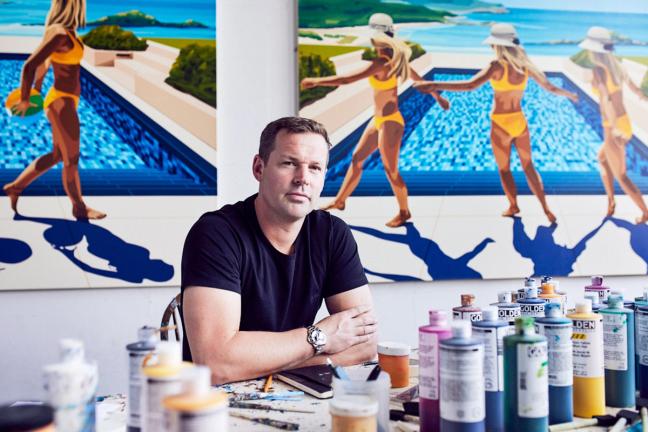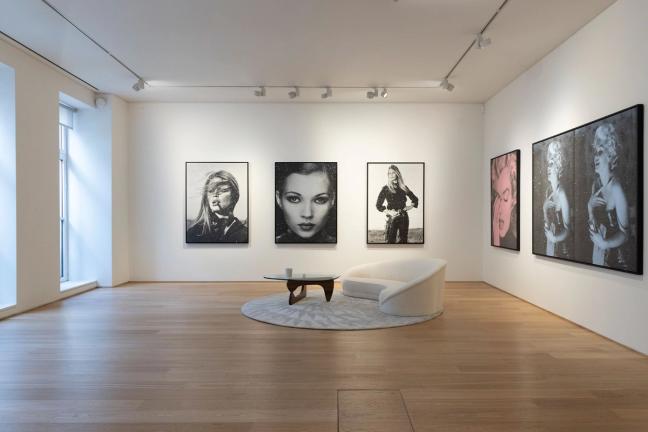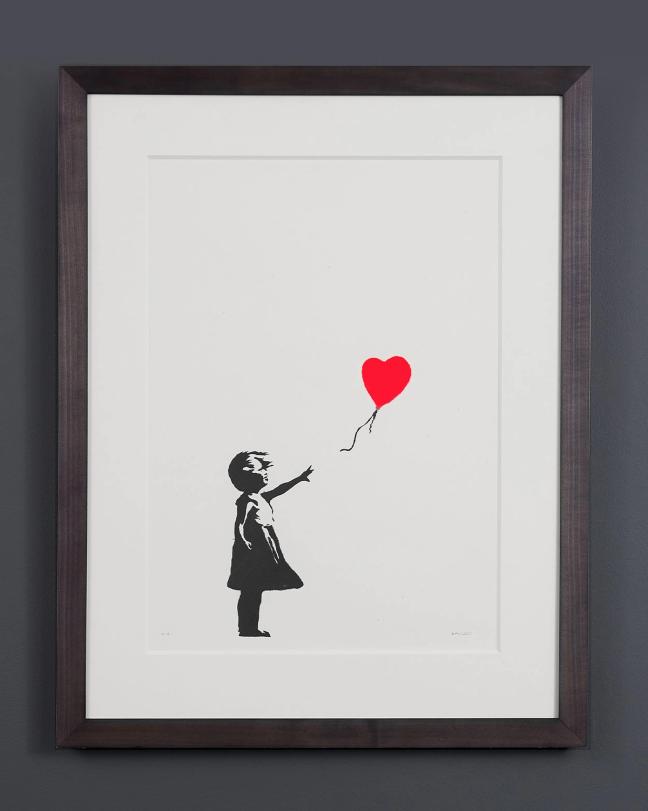Maddox Gallery’s Jay Rutland on the blue-chip and emerging artists to invest in now
'Art should move you, provoke thought and resonate on a deeper level'
Since at least 2015, the year of its launch, Maddox Gallery has been an instrumental, smooth-moving force in the contemporary-art sphere, a destination where blue-chip names, the well-established and the emerging are harmonised under the same roof. Marquee draws, such as Banksy, Jean-Michel Basquiat and Keith Haring, have showcased here, as have The Connor Brothers, whose work zones in on contemporary issues; photographer David Yarrow; and the punchy Sebastian Chaumeton, a multi-media creative who has a penchant for exploring the effects of online culture.

Jay Rutland
This effort, broadly speaking, to combine big hitters with the lesser known has not only helped Maddox Gallery become a champion of myriad styles and flavours, but, in doing so, it’s also helped create a place that caters to those well versed in art collecting and those who don’t have as many years to draw upon.
Key to Maddox Gallery's growth – there are five locations (four in London; one in Gstaad, Switzerland) – is Jay Rutland, the creative director who’s shaped the gallery’s direction, turning it from a personal love into a venture that’s spanned the continents. Below, we speak to Rutland about the true beauty of street art, missing out on Banksy’s Girl with Balloon, and his advice for collectors who buy for investment and those who buy for joy.

Maddox Gallery Berkeley Street
GJ: It’s a broad question, but what is it about street art that speaks to you?
JR: Its inherent nature – raw, unfiltered and, often, unsanctioned – gives it a pulse that you don't always find in more conventional art forms. Street art is a reflection of the community and the times; it's a social commentary that's painted on the very canvas of the cities we live in.
Moreover, the ephemeral nature of street art – the way it evolves and, sometimes, disappears with the urban landscape – adds a layer of poignancy and immediacy to the work. In this way, it doesn't just decorate a city; it becomes an integral part of its cultural and historical narrative.
I’ve read that the first piece of art you acquired was a Banksy. What, for you, is the key to his continuous appeal?
Despite being one of the most famous artists in the world, Banksy has managed to maintain a veil of mystery around his identity. This enigma adds a layer of intrigue to his work and keeps the focus squarely on the art itself, not the artist.
His pieces are not just visually striking, but they also often carry powerful social and political messages; whether it’s critiquing war, consumerism or social inequality, Banksy's art speaks to the pressing issues of our times. Moreover, even when tackling serious themes, there’s often an element of wit or irony in his work. This approach makes complex topics accessible and engaging, inviting a broader range of people to connect with – and contemplate – the messages in his art.
I believe that you have a fairly long list of works that you regret not purchasing. Apart from Girl with Balloon, would you be able to reveal the names of any other works that you missed out on?
Missing out on early pieces by Jean-Michel Basquiat and Keith Haring were notable oversights…
Is there a medium that you’re particularly drawn to – and, is there a medium you’re less keen on?
I've always been particularly drawn to traditional mediums, such as oil on canvas. The depth, texture and history they bring evoke a timeless connection that I find deeply compelling. There's something about the classic techniques and the artists' tactile engagement with their work that resonates with me.
Although I recognise the innovation and potential in digital art, it's a medium I'm less keen on. For me, the physical presence and enduring nature of traditional art-forms hold a special allure that digital works – which often feel transient and intangible – don't quite capture. However, I do appreciate the evolving art landscape and the diverse expressions that new mediums bring.
As you’ve noted before, over the next two decades, the generation of people born between 1944 and 1964 are expected to transfer $30tn in wealth to following generations – how do you think this shift in wealth will play out in the art world? And, how are tastes shifting right now?
It’s likely to democratise art ownership, as this wealth trickles down to younger generations that have different tastes and values. Currently, there's an observable shift towards more contemporary, inclusive and socially engaged art. Younger collectors are drawn to pieces that resonate with their personal experiences and worldviews, often favouring emerging artists who explore themes such as identity, environment and technology. Additionally, the growing interest in digital art and NFTs is a testament to this generational shift in tastes.
This wealth transfer could also lead to increased patronage in the arts, with more funding for museums, galleries and artists, possibly fostering a vibrant and diverse art ecosystem. In essence, this transition is not just a transfer of wealth, but also a transfer of cultural values and priorities within the art world.
I’ve read that a key principle you’d suggest for buyers is to buy what you love. Is this an ethos – that gut reaction to a piece – something you still thoroughly believe in?
Art should move you, provoke thought and resonate on a deeper level. Although considerations, such as investment value and market trends, are important, the intrinsic value of loving what you own cannot be overstated.
This personal connection ensures that the art you collect becomes more than just an asset; it becomes a part of your life's narrative. In a world where art can serve multiple purposes – as an investment, a status symbol, a conversation piece – the most enduring satisfaction often comes from the pieces that speak directly to your heart.
Would your advice differ from when speaking to a collector who buys art purely for investment reasons, and a collector who buys art purely for joy?
For the former, my advice would be more analytical. It would involve a deep-dive into market trends, historical data and predicting potential future value. Investment-focused collectors should be advised to diversify their portfolio with a mix of established blue-chip artists and promising emerging artists. It's important for them to stay informed about the art market dynamics and to consider factors such as rarity, an artist's market trajectory and provenance.
For the latter, the advice is more personal and subjective. It's about finding art that speaks to them on an emotional level. Here, the focus is on the aesthetic appeal, the story behind the artwork and how it fits into their personal narrative or living space.

Yayoi Kusama

Andy Warhol
For you, who’s on the shortlist of blue-chip artists to invest in now, and who’s on the shortlist of emerging names to invest in now?
For blue-chip artists, the current focus would be on names that have consistently demonstrated market resilience and growth. Artists such as Yayoi Kusama, David Hockney and Andy Warhol come to mind. These artists have not only a strong historical market presence but also continue to influence contemporary art discourse.
In terms of emerging artists, the landscape is vibrant and diverse. A few names to consider would be Cooper and Will Martyr. Cooper is an Indiana-based artist known for his alternative approach to still life, and he utilises a diverse and vibrant palette, evoking the vivid colours of the 1990's post-modernist pop movements. He is already gaining quite the cult following, and his works have been picked up by some very serious collectors. Will Martyr is a painter whose works depict singular moments of escapism that aim to represent those idyllic and profound moments of our lives.

Will Martyr
Do you have a specific ratio of emerging artists versus established artists one should have in their collection – or would that be unnecessary?
There's no one-size-fits-all ratio. It should reflect the collector's personal taste and investment strategy. A balanced approach often works best.
Are there any locations you’re currently looking at – outside the conventional hubs of Paris, the US and the UK – both in terms of expansion (if expansion is on the cards) and groups of artists that are worth note?
Places such as Lagos and Seoul are burgeoning with talent.
Can you tell our readers a bit about the new gallery, on Berkeley Street, and what it is about the space that excites you? Moreover, I’ve read that you’re not much of a planner, but is there any major new direction in which you’d like to take Maddox Gallery?

Maddox Gallery Berkeley Street
It’s a thrilling evolution for Maddox Gallery. This space is an architectural gem, blending contemporary design with classic elegance, creating an inviting and dynamic environment for showcasing art. What excites me most is the versatility of the space – it allows for an immersive and varied display of artworks, from large-scale installations to intimate pieces.
This gallery is not just a place to view art; it's designed to be a cultural hub, encouraging engagement and interaction. The layout and lighting are meticulously crafted to highlight each piece, providing visitors with a unique and memorable experience.
Regarding the direction for Maddox Gallery, I aim to push the boundaries of traditional art presentation, making art more accessible and engaging to a wider audience. This includes embracing digital and interactive art forms, hosting collaborative events with artists, and fostering educational programmes. The goal is to make Maddox Gallery a place where art is not just seen but experienced – where visitors can connect with art in new and meaningful ways.
Want more from Maddox? We take a look at photographer David Yarrow’s exhibition at the gallery…

Become a Gentleman’s Journal Member?
Like the Gentleman’s Journal? Why not join the Clubhouse, a special kind of private club where members receive offers and experiences from hand-picked, premium brands. You will also receive invites to exclusive events, the quarterly print magazine delivered directly to your door and your own membership card.







